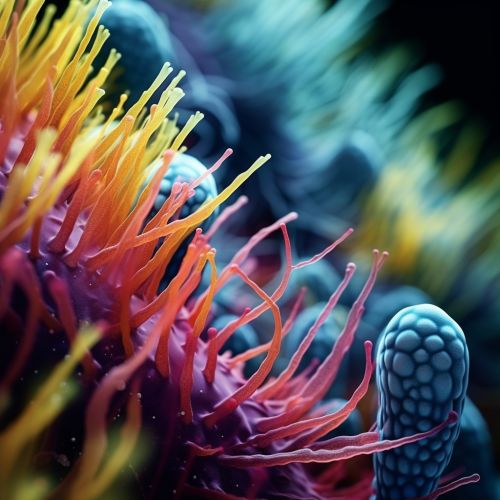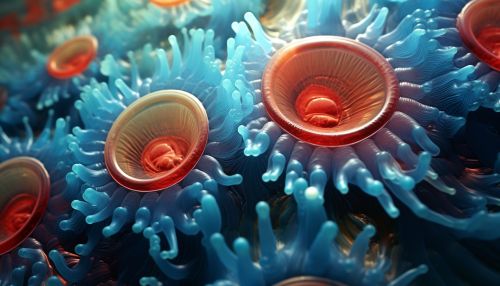Magnetotactic Bacteria
Introduction
Magnetotactic bacteria (MTB) are a diverse group of prokaryotes that have been discovered in various aquatic environments around the world. These bacteria have the unique ability to orient themselves along the Earth's magnetic field lines, a behavior known as magnetotaxis. This is made possible by the presence of intracellular, membrane-bound, magnetic mineral particles known as magnetosomes.


Magnetotaxis
Magnetotaxis refers to the ability of MTB to align themselves with the Earth's magnetic field. This behavior is believed to aid these bacteria in locating optimal environments for growth and survival, typically in the oxic-anoxic transition zone (OATZ) of aquatic habitats. The OATZ is a region where conditions transition from oxygen-rich (oxic) to oxygen-poor (anoxic), and it is in this zone that MTB are most commonly found.
Magnetosomes
Magnetosomes are intracellular structures that enable magnetotaxis in MTB. These structures are composed of magnetic mineral crystals enveloped by a lipid bilayer. The most common minerals found in magnetosomes are magnetite (Fe3O4) and greigite (Fe3S4). The size, shape, and arrangement of magnetosomes can vary widely among different species of MTB, and these characteristics are often used in the identification and classification of these bacteria.
Biomineralization
The process of magnetosome formation in MTB is a form of biomineralization, a process where living organisms produce minerals. In MTB, this process is highly controlled and results in the formation of magnetite or greigite crystals with specific sizes and shapes. The biomineralization process in MTB is unique among bacteria and is not yet fully understood.
Magnetotactic Bacteria Diversity
MTB are a diverse group of bacteria that can be found in both freshwater and marine environments. They can be divided into different groups based on their morphology, the type of magnetic mineral they produce, and their phylogenetic relationships. Some of the most well-known groups of MTB include the Magnetospirillum, Magnetococcus, and Desulfovibrio genera.
Applications
Due to their unique properties, MTB and magnetosomes have potential applications in various fields. In medicine, magnetosomes could be used for targeted drug delivery, hyperthermia treatment of cancer, and as contrast agents in magnetic resonance imaging (MRI). In environmental remediation, MTB could be used to remove heavy metals and other pollutants from water. In biotechnology, magnetosomes could serve as templates for the synthesis of nanostructured materials.
